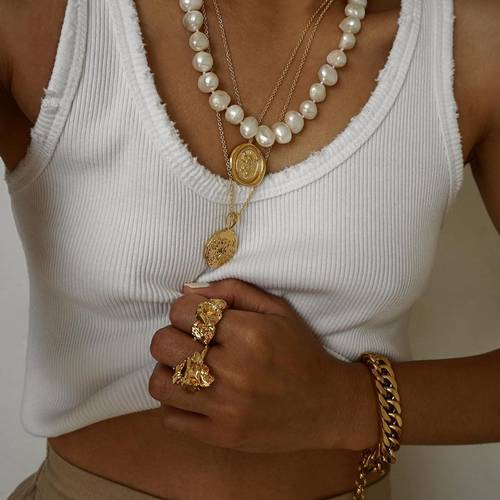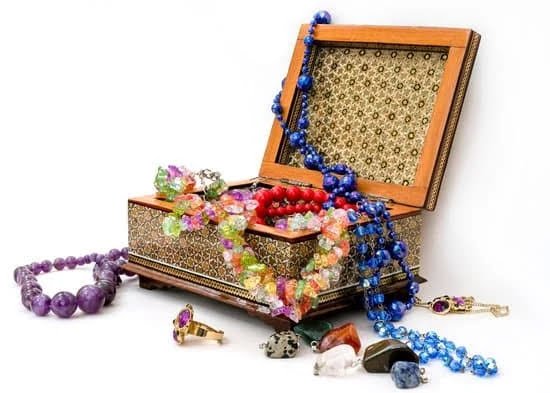Handmade jewelry from Latin America is a true reflection of the rich cultural heritage and artistic traditions of the region. The art of creating stunning jewelry by hand has been passed down through generations, with each piece showcasing intricate craftsmanship and unique designs. From Colombian filigree to Mexican Taxco silver, these traditional techniques have become synonymous with the beauty and elegance of handmade jewelry in Latin America.
In this article, we will explore the world of handmade jewelry in Latin America, delving into the traditional techniques that have been perfected over centuries, the cultural significance behind these stunning pieces, and the top designers making waves in the industry. We will also take a look at how sourcing materials and ethical practices play a significant role in creating sustainable and authentic handmade jewelry.
Additionally, we will uncover the diverse aesthetic styles that set apart handmade jewelry from different Latin American countries, and how this market is gaining global recognition.
Join us on a journey through the vibrant world of handmade jewelry in Latin America, as we unravel the stories behind these exquisite pieces and provide valuable tips for buying authentic pieces that showcase the true spirit of Latin American craftsmanship.
Traditional Techniques
Colombian Filigree
Colombian filigree is a traditional jewelry-making technique that has been passed down through generations in Colombia. This intricate art involves the twisting and bending of fine threads of gold or silver to create delicate designs. The result is a stunning piece of jewelry that showcases the craftsmanship and skill of the artisans. Colombian filigree jewelry often features intricate patterns inspired by nature, reflecting the country’s rich biodiversity.
Mexican Taxco Silver
The town of Taxco, Mexico has long been renowned for its silver mines and skilled silversmiths. The tradition of Taxco silver dates back to pre-Columbian times when indigenous artisans were already working with this precious metal. Today, Taxco is famous for its high-quality silver jewelry, which often incorporates traditional Mexican motifs and symbols. The combination of ancient techniques and modern design sensibilities has made Taxco silver jewelry highly sought after around the world.
The Global Appeal
Both Colombian filigree and Mexican Taxco silver have garnered international acclaim due to their exquisite craftsmanship and unique cultural heritage. These traditional techniques have not only preserved ancient artisanal skills but have also become symbols of Latin American identity. As the demand for authentic handmade jewelry from Latin America continues to grow, these traditional techniques are gaining global recognition for their cultural significance and timeless beauty.
As consumers become increasingly interested in ethical and sustainable practices, there is a growing appreciation for the handmade jewelry industry in Latin America. Artisans are committed to sourcing materials responsibly, using recycled metals, and supporting local communities.
This dedication to ethical practices adds an extra layer of value to handmade jewelry from Latin America, making it not only beautiful but also socially conscious. Whether it’s Colombian filigree or Mexican Taxco silver, these traditional techniques embody the spirit of Latin American craftsmanship and creativity that continues to captivate the world.
Cultural Significance
Handmade jewelry in Latin America holds a deep cultural significance that reflects the spirit of the diverse communities in the region. Whether it’s a beaded necklace from Guatemala, a silver bracelet from Mexico, or a filigree earring from Colombia, each piece is infused with the rich heritage and traditions of the artisans who craft them.
The use of traditional techniques and materials passed down through generations not only preserves the artistry of Latin American culture but also serves as a connection to the past.
The cultural significance of handmade jewelry in Latin America can be seen in its role as more than just an accessory. These pieces often hold symbolic meanings, representing spiritual beliefs, historical events, or indigenous traditions. For example, the use of bright colors and intricate patterns in beaded jewelry may symbolize identity and community pride for indigenous groups, while designs inspired by nature reflect a deep connection to the environment.
The spirit of Latin American communities is also reflected in the stories behind handmade jewelry. Each piece tells a narrative of its creator’s personal experiences, struggles, triumphs, and aspirations. By understanding these narratives, buyers can gain a deeper appreciation for the cultural richness woven into every handmade jewelry piece from Latin America. It is this unique blend of tradition, symbolism, and storytelling that makes each piece of handmade jewelry from Latin America truly special and valuable.
- Preservation of traditional techniques
- Spiritual and symbolic meanings
- Stories behind each piece
Top Latin American Handmade Jewelry Designers to Watch
Latin America is home to a vibrant and diverse community of artisans who create stunning handmade jewelry that reflects the rich cultural traditions and artistic heritage of the region. From intricate filigree work in Colombia to the exquisite silver craftsmanship in Mexico, Latin American handmade jewelry continues to captivate global audiences with its unique designs and stories.
Emerging Designers
There are several up-and-coming jewelry designers in Latin America who are making waves in the industry with their innovative designs and commitment to preserving traditional techniques. These designers often draw inspiration from their local surroundings, incorporating elements of nature, history, and spirituality into their creations.
Keep an eye out for names like Maria Isabel Campos from Peru, who infuses her pieces with Andean symbolism, or Fernanda Sibilia from Argentina, known for her bold and avant-garde approach to metalwork.
Established Icons
In addition to emerging talent, there are also established icons in the world of Latin American handmade jewelry whose work has gained recognition on a global scale. Names like Mercedes Salazar from Colombia, who is celebrated for her use of vibrant colors and bold statement pieces, or Daniela de Marchi from Brazil, whose organic and sustainable approach to jewelry-making has garnered critical acclaim.
Craftsmanship and Innovation
What sets these designers apart is not only their exceptional skill and craftsmanship but also their ability to innovate while staying true to their cultural roots. Whether it’s experimenting with new materials or reinterpreting traditional motifs in contemporary ways, these designers are pushing the boundaries of what is possible in handmade jewelry while still honoring the rich heritage of Latin America.
As the demand for authentic handmade jewelry from Latin America continues to grow, these top designers are poised to shape the future of the industry with their creativity and dedication to preserving the artistry of their ancestors.
Sourcing Materials
When it comes to handmade jewelry in Latin America, the sourcing of materials is a crucial aspect that sets the region apart. One of the most remarkable things about handmade jewelry in Latin America is the ethical and sustainable practices employed by artisans. Many artisans source their materials locally, utilizing traditional methods of mining and harvesting to ensure minimal impact on the environment.
For example, in countries like Colombia and Peru, gold and silver are often sourced from small-scale mines that adhere to responsible mining practices, such as minimizing the use of mercury and cyanide. In Mexico, artisans working with precious metals often use recycled materials, reducing the need for new mining altogether. These sustainable practices not only contribute to the preservation of natural resources but also support local economies.
Aside from precious metals, other materials commonly used in handmade jewelry in Latin America include semiprecious stones like turquoise, amethyst, and jade. These materials are often ethically sourced from local mines or suppliers who uphold fair trade principles. By incorporating these elements into their designs, artisans are able to create unique pieces that reflect the cultural heritage and natural beauty of their respective countries.
Relevant Table
| Material | Sourcing Method |
|---|---|
| Gold | Responsible small-scale mining practices |
| Silver | Recycled materials |
| Semiprecious Stones | Ethically sourced from local mines or fair trade suppliers |
Unique Styles
Latin America is a region rich in culture and diversity, and this is reflected in the unique styles of handmade jewelry that can be found across its various countries. From the vibrant colors of Mexico to the intricate designs of Peru, each country in Latin America boasts its own distinctive aesthetic when it comes to jewelry making.
One of the most striking features of handmade jewelry in Latin America is the use of traditional techniques passed down through generations. These techniques often vary from country to country, resulting in a wide array of styles and designs. For example:
- In Mexico, artisans are known for their skillful use of filigree and the creation of stunning Taxco silver jewelry.
- In Colombia, indigenous communities have mastered the art of weaving colorful beads into intricate patterns to create beautiful pieces that reflect their cultural heritage.
- In Peru, metalworking and stone carving have been perfected over centuries, resulting in jewelry that showcases a meticulous attention to detail.
What makes handmade jewelry from Latin America truly special is its ability to capture the essence of each country’s heritage. Whether it’s the bold and colorful designs inspired by traditional textiles or the subtle elegance of colonial influences, each piece tells a story and represents a part of Latin American identity. As global interest in ethical fashion and sustainable practices continues to grow, these unique styles are gaining recognition on an international scale.
The diverse aesthetic of handmade jewelry across Latin American countries not only offers a wide range of options for consumers but also provides an opportunity to celebrate the creativity and craftsmanship of local artisans. By exploring the different styles and techniques used in each country, buyers can discover pieces that not only make a fashion statement but also carry cultural significance and support sustainable practices within the region.
The Growing Market
The demand for handmade jewelry from Latin America has been steadily increasing, with global recognition for the craftsmanship and unique designs originating from this region. Handmade jewelry from Latin America is gaining popularity not only for its beautiful aesthetics but also for its cultural significance and ethical sourcing practices.
One of the reasons why handmade jewelry from Latin America is gaining global recognition is due to the traditional techniques used by artisans. For example, Colombian filigree and Mexican Taxco silver are renowned worldwide for their intricate and delicate designs. These traditional techniques have been passed down through generations, making each piece of jewelry truly special and unique.
Additionally, the growing market for handmade jewelry from Latin America can be attributed to the unique styles that are reflective of the diverse aesthetic of different countries in the region. From vibrant and bold designs in Mexico to more subtle and elegant pieces in Peru, there is a wide array of styles to choose from, catering to different preferences and tastes around the world.
As global consumers become more conscious about ethical and sustainable practices, the demand for authentic handmade jewelry from Latin America continues to grow. The emphasis on using ethically sourced materials and supporting local communities adds value to these handcrafted pieces, making them even more appealing to an international market.
| Traditional Techniques | Colombian Filigree, Mexican Taxco Silver |
|---|---|
| Cultural Significance | Reflects spirit of Latin American Communities |
| Ethical Sourcing | Supporting local communities |
Tips for Buying Authentic Handmade Jewelry From Latin America
In conclusion, handmade jewelry from Latin America offers a unique blend of traditional techniques, cultural significance, and diverse aesthetic styles. The art of Colombian filigree and Mexican Taxco silver reflects the rich artistic heritage of these countries, while also serving as a testament to the skill and craftsmanship of local artisans.
The cultural significance of handmade jewelry in Latin American communities is evident in the designs and materials used, with many pieces serving as a reflection of spiritual beliefs and traditions.
For those interested in purchasing authentic handmade jewelry from Latin America, it is important to be mindful of the sourcing practices and ethical considerations involved. Many designers and artisans prioritize sustainable materials and fair trade practices, ensuring that their creations have a positive impact on both the environment and the communities involved in their production. By supporting these ethical practices, buyers can not only acquire beautiful handcrafted pieces but also contribute to the preservation of traditional artisanal techniques.
As the global market for handmade jewelry from Latin America continues to grow, it is increasingly important for consumers to be discerning when seeking out authentic pieces. Whether shopping online or during travels to Latin American countries, it is crucial to look for reputable sources that prioritize genuine craftsmanship and support local artisans. By doing so, buyers can enjoy the beauty and cultural richness of handmade jewelry from Latin America while also contributing to the sustainability of traditional artistic practices.
Frequently Asked Questions
Which Country Has a Tradition of Making Jewelry?
Jewelry making is a tradition in many countries, but one notable country with a rich history of jewelry making is India. Indian jewelry is known for its intricate designs and use of precious gemstones, reflecting the country’s cultural and artistic traditions.
What Civilization Did Jewelry Making Originate From?
The practice of jewelry making can be traced back to the ancient civilizations of Mesopotamia, Egypt, and China. These early civilizations developed advanced metalworking techniques that laid the foundation for the art of jewelry making as we know it today.
What Ethnicity Buys the Most Jewelry?
While people from all ethnic backgrounds appreciate and purchase jewelry, it has been observed that individuals of South Asian ethnicity tend to buy the most jewelry. This can be attributed to cultural traditions, such as weddings and religious ceremonies, where the giving and wearing of jewelry hold significant importance.

Welcome to my jewelry blog! My name is Sarah and I am the owner of this blog.
I love making jewelry and sharing my creations with others.
So whether you’re someone who loves wearing jewelry yourself or simply enjoys learning about it, be sure to check out my blog for insightful posts on everything related to this exciting topic!





